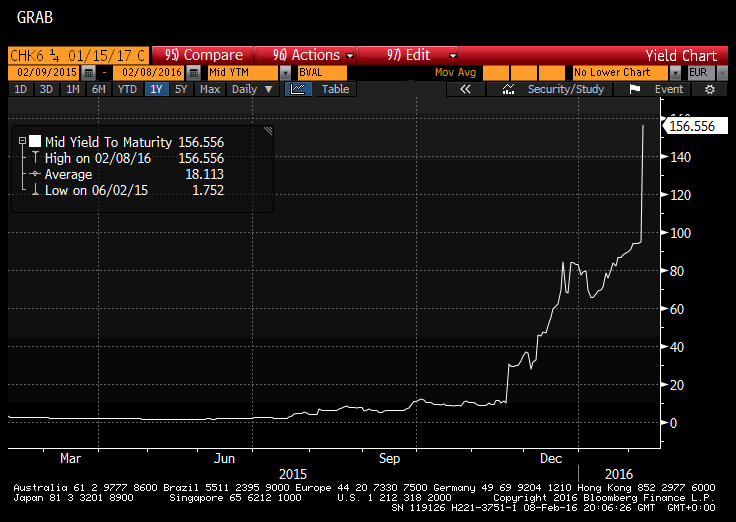Historically, it has been the case that lower oil provided a net benefit to the US and EU economies, both of which were large net importers of Energy. This remains the case in EU today, however we wonder to what extent this relationship might have changed for the US in recent years. Just looking at Energy companies in our IG and HY indexes, we are seeing their cumulative capital expenditures since Jan 2010 at $4.7 trillion, with $1.15trln coming in the last four quarters alone. The latter figure translates into 6.5% of the total US GDP, not an immaterial figure. We realize that not all of this capex went into US shale plays, however it is just as important to acknowledge that not all US shale players are captured by our IG/HY index data. What part of this capex budget gets cut next year is subject to uncertainty, however even a relatively modest cut of 10% could translate into a noticeable 65bp impact on broader GDP figures.
What makes this issue even more consequential to the US economy, is that the negative impact of lower oil is unlikely to remain confined just to the Energy sector alone. Some of the more obvious casualties will include capital goods and materials sectors, where suppliers of drilling equipment, pipes, storage containers, machinery, cement, water, and chemicals used in shale production are all likely to experience a negative impact. Now, readers should be careful to avoid double-counting the same dollars here, as a dollar of capex by oil producer is 80 cents of inventory sold from its suppliers; only incremental value-added is captured by the GDP. Add to this list railroads, where volumes exploded in recent years as large quantities of oil were ferried by rail cars.
All these are relatively obvious casualties of a pullback in Energy producers’ budgets. Perhaps somewhat less straightforward would be utilities – we wonder how much electricity was used to power all this new shale-related manufacturing, production, transportation, and refining activity? Taking one more step towards less directly impacted sectors, we think about financials, and not even in a sense of direct loan exposures to cash-flow challenged producers. Energy producers have raised $550bn in new debt across USD IG, HY, and leveraged loan markets since early 2010 (Figure 3). Lower capex budgets would imply lower need (and ability!) to borrow, thus squeezing a revenue source for investment banks.
And now to the least obvious, or perhaps even counterintuitive, candidates: think about consumer discretionary sectors, such as retail, autos, real estate, and gaming. States with the strongest employment growth in the US in the last few years were all states heavily involved in shale development – average unemployment rate in Dakotas, Nebraska, Utah, Colorado, Iowa, Montana, Oklahoma, Wyoming, and Texas is 4.1%, compared to a national aggregate of 5.8%. Average unemployment rate in oil-producing states today is lower than the national aggregate was at any point in time in the last twelve years.
While we still believe that lower oil prices would provide a net benefit to consumer discretionary areas, we think that historical parallels between Energy prices and their positive net effects could be challenged in this episode given significant changes to structural characteristics of the US economy. Just as we believe consensus has consistently underestimated positive externalities of the US Energy revolution in the past few years, it is positioning itself to underestimate the other side of this development now.
A link to the full report is posted in the Subscriber's Area.
The stock market appears to be currently focused on the benign economic scenario that has allowed the Fed to signal short-term interest rates may increase in 2015. With unemployment back to trend and early signs of wage increases, along with recovering economic growth, the Fed has good reason to want to use this environment as an opportunity to replenish its arsenal of policy tools. Consumers will find that they have extra money in their pocket every time they fill up at the pump or pay of heating oil and these benefits will pass on to Energy consuming sectors as well.



